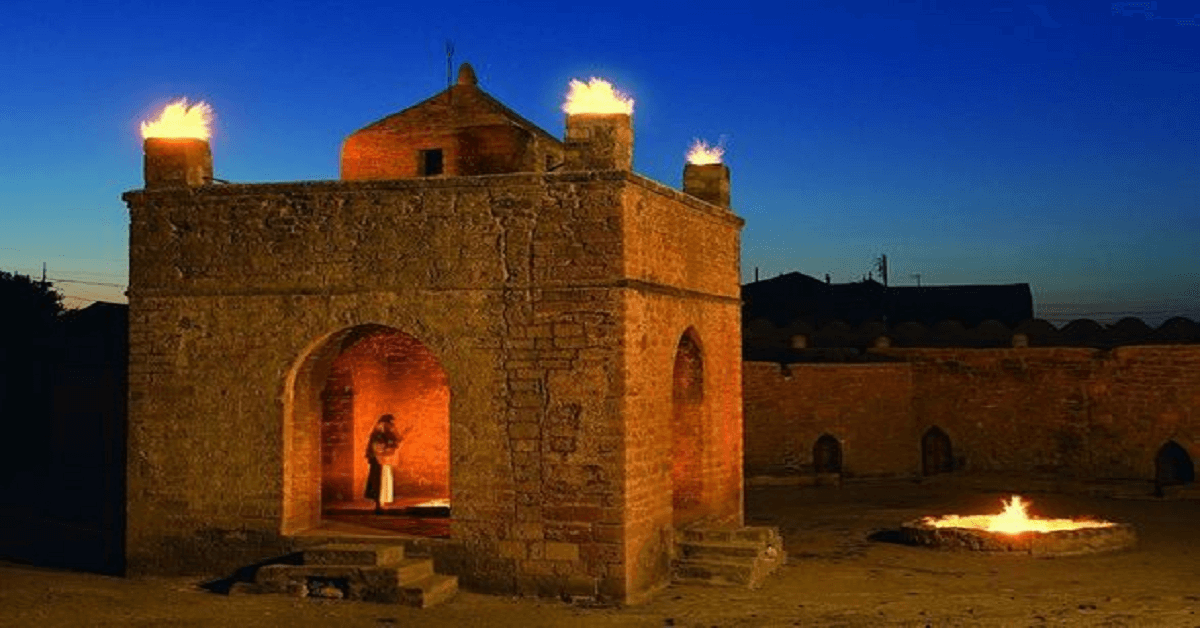
Situated on the Abseron Peninsula, the Fire Temple of Baku was a place of sacrifice founded above a natural gas vent.
Fire rituals at the peninsula’s numerous natural gas vents date back to at least the 10th century, although the current temple structure was built during the 17th and 18th centuries. The structure is similar to the caravanserais (travellers’ inns) of the region with pentagonal walls surrounding a courtyard. However, in the middle of this courtyard sits an altar, the centerpiece of the temple complex where fire rituals were observed.
The altar is situated right a natural gas vent, igniting a large flame in the middle and four smaller flames on the rooftop corners of the pavilion. Surrounding a temple altar are a number of small cells which held the ascetic worshippers and pilgrims.
Debate continues as to whether this temple was founded as a Zoroastrian or a Hindu place of worship, since the structure incorporates architectural elements from both faiths, without wholly adhering to either. The most established theory places the temple in the Zoroastrian tradition, but that it has evolved into a predominantly Hindu place of worship over time. In the late 19th century, the place was abandoned, most likely as a result of the dwindling Indian population in Azerbaijan.
Heavy exploitation of the natural gas reserves on the peninsula resulted in the exhaustion of the flame in 1969. The flames seen today are fed by Baku’s main gas supply. In 1975, the complex was turned into a museum, and in 1998, it was nominated as a UNESCO World Heritage Site.
Also Read: All You Need To Know About Attukal Temple

Post Your Comments